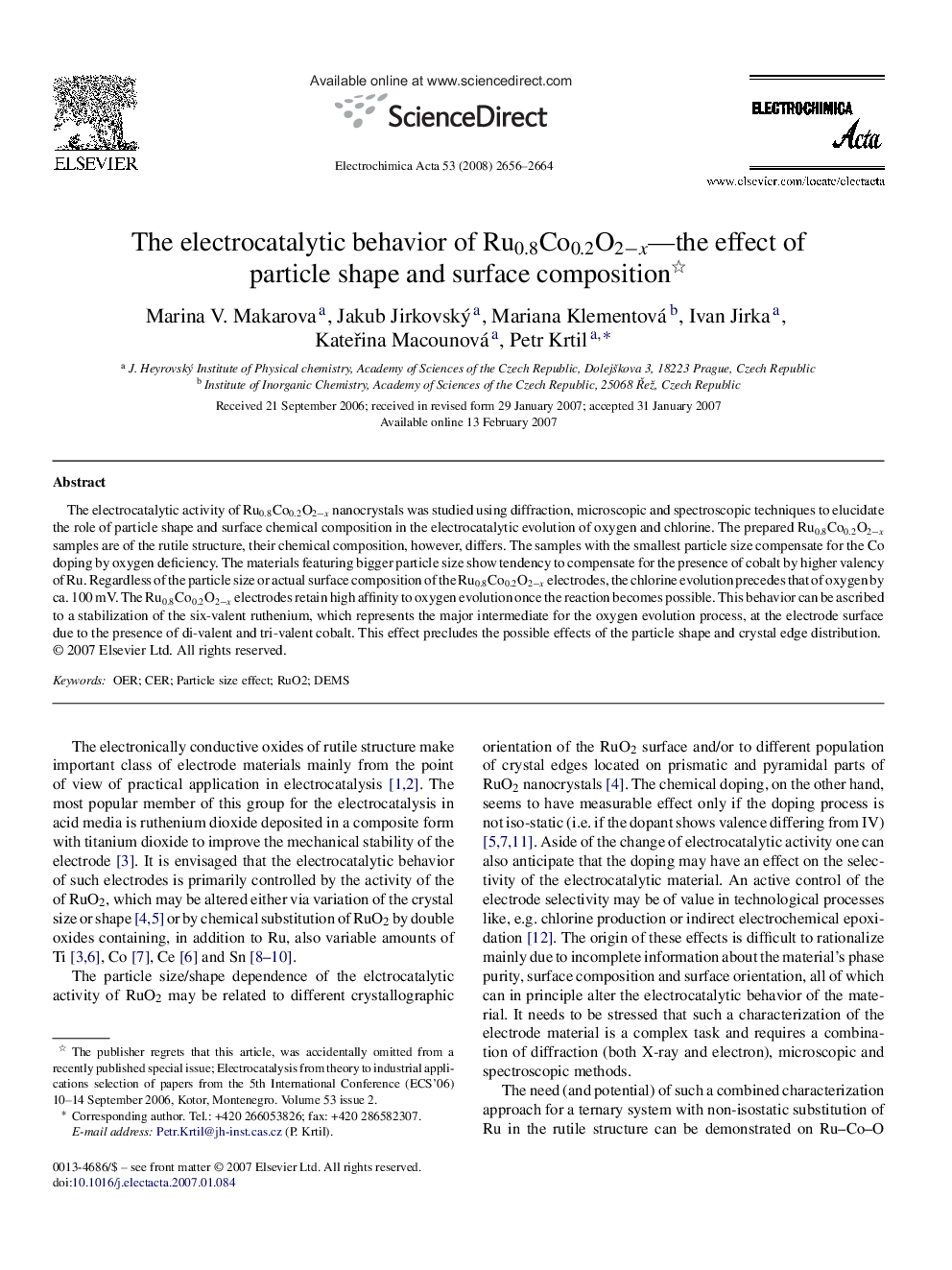| Article ID | Journal | Published Year | Pages | File Type |
|---|---|---|---|---|
| 193905 | Electrochimica Acta | 2008 | 9 Pages |
The electrocatalytic activity of Ru0.8Co0.2O2−x nanocrystals was studied using diffraction, microscopic and spectroscopic techniques to elucidate the role of particle shape and surface chemical composition in the electrocatalytic evolution of oxygen and chlorine. The prepared Ru0.8Co0.2O2−x samples are of the rutile structure, their chemical composition, however, differs. The samples with the smallest particle size compensate for the Co doping by oxygen deficiency. The materials featuring bigger particle size show tendency to compensate for the presence of cobalt by higher valency of Ru. Regardless of the particle size or actual surface composition of the Ru0.8Co0.2O2−x electrodes, the chlorine evolution precedes that of oxygen by ca. 100 mV. The Ru0.8Co0.2O2−x electrodes retain high affinity to oxygen evolution once the reaction becomes possible. This behavior can be ascribed to a stabilization of the six-valent ruthenium, which represents the major intermediate for the oxygen evolution process, at the electrode surface due to the presence of di-valent and tri-valent cobalt. This effect precludes the possible effects of the particle shape and crystal edge distribution.
